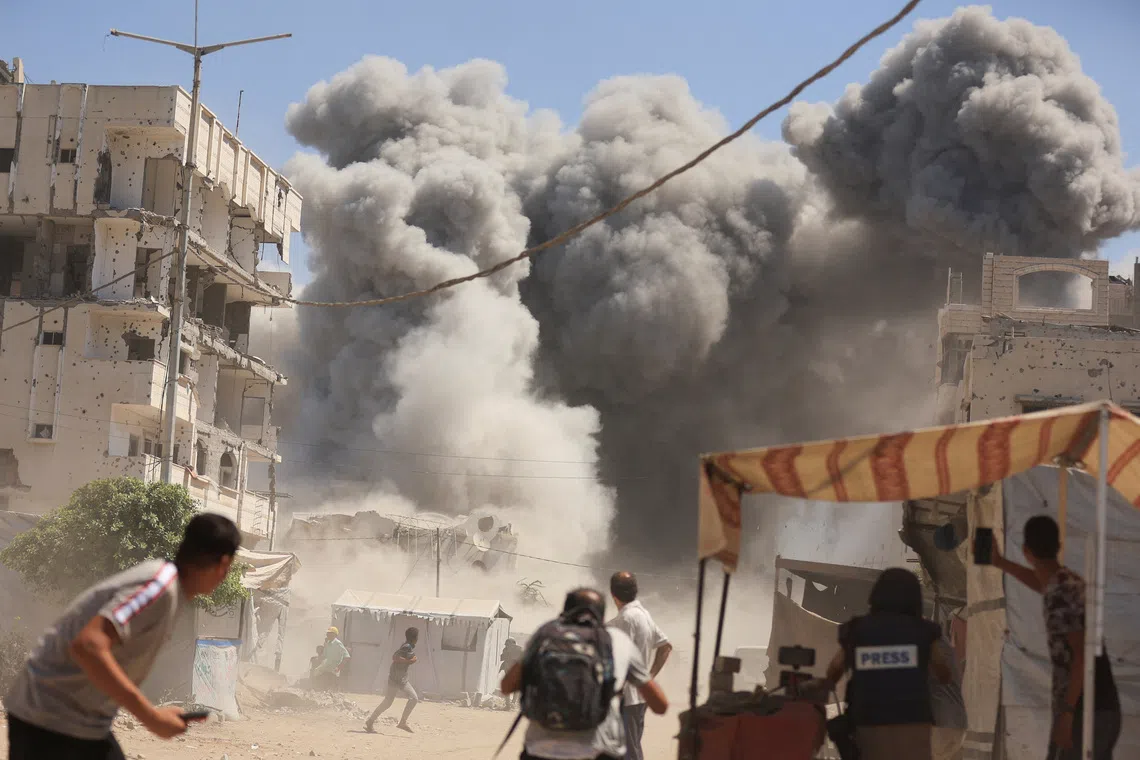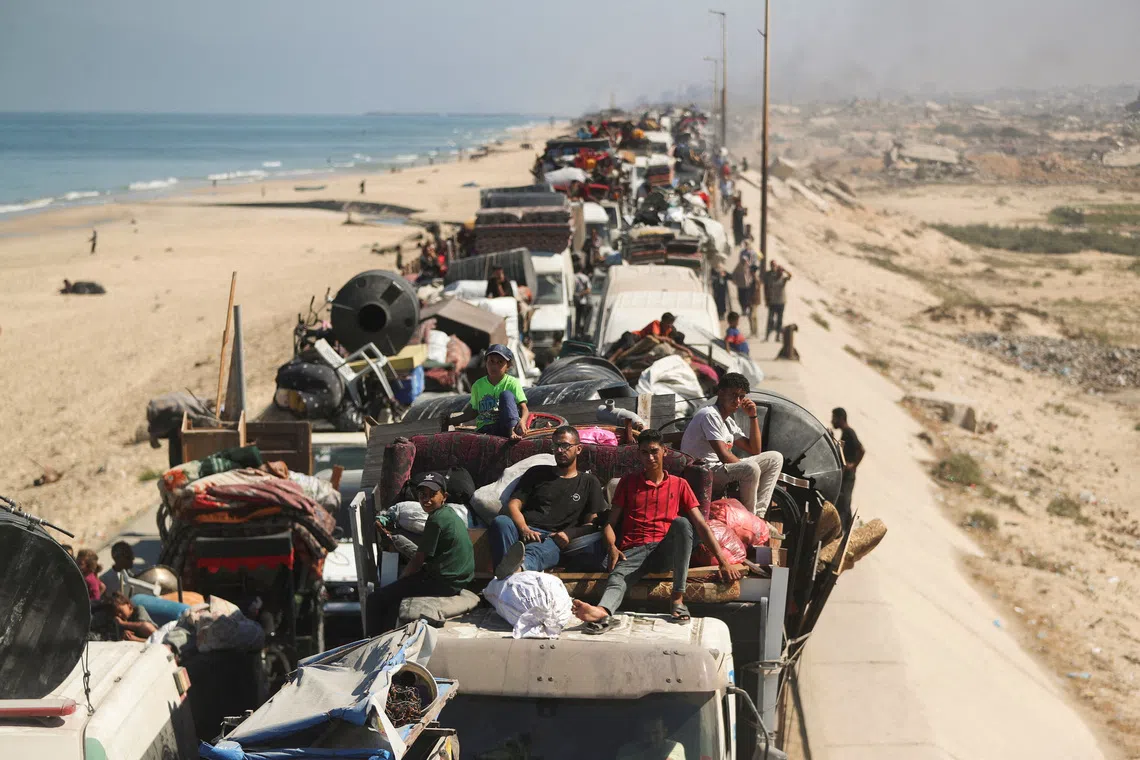Palestinians flee Gaza City under Israeli bombardment as Rubio arrives
Sign up now: Get ST's newsletters delivered to your inbox

Smoke rising after an Israeli air strike hit a building that was housing displaced Palestinians in Gaza City on Sept 14.
PHOTO: REUTERS
Follow topic:
JERUSALEM – Palestinian families streamed out of Gaza City on Sept 14, some crammed into pickup trucks, others on foot, as Israeli forces pressed their assault on the territory’s main urban centre.
Parents carried their children while the elderly hobbled along.
A man in a wheelchair and another on crutches were among the long line of people heading south under Israeli military orders.
The military has issued multiple evacuation warnings for Gaza City, but many residents have said they have nowhere else to go, noting that Israel has repeatedly struck the area in the south where it has urged people to head to.
The scenes of mass flight from Gaza City came as US Secretary of State Marco Rubio arrived in Israel in a show of support
Mr Rubio said Washington wanted to talk about how to free the 48 hostages – of whom 20 were believed to be still alive – still held by Hamas in Gaza and rebuild the coastal strip.
“What’s happened, has happened,” he said. “We’re going to meet them (the Israeli leadership). We’re going to talk about what the future holds,” he said before heading to Israel, where he will stay until Sept 16.
He visited the Western Wall Jewish prayer site in Jerusalem with Prime Minister Benjamin Netanyahu and will hold talks with him during the visit.
Mr Netanyahu said Mr Rubio’s visit underscored the “strength” of ties between the US and Israel.
“It’s as strong, as durable as the stones in the Western Wall that we just touched,” he told journalists after offering prayers alongside Mr Rubio and US Ambassador to Israel Mike Huckabee.
Mr Netanyahu called the US’ top diplomat an “extraordinary friend” of Israel.
The Israeli military’s Arabic-language spokesman, Colonel Avichay Adraee, issued on Sept 14 a warning to those in Gaza’s port area and Al-Rimal neighbourhood to evacuate immediately to a “humanitarian zone” in the south, where Gazans say there is no more space to pitch tents.
He had on Sept 13 said more than 250,000 Gaza City residents had already fled
Media restrictions in Gaza and difficulties in accessing many areas mean journalists are unable to independently verify the details provided by the civil defence agency or the Israeli military.

Displaced Palestinians moving southwards after Israeli forces ordered them to leave Gaza City.
PHOTO: PREUTERS
‘Panic and extreme fear’
Prior to the latest assault, the UN estimated that around a million people lived in and around Gaza City, where it officially declared a famine
Footage showed exhausted families moving along the coastal road near Nuseirat south of Gaza City, with their belongings stacked high in vehicles.
In the city itself, “the bombardment has not stopped since dawn”, said Ms Umm Alaa Shaaban, 45, a resident of Tal al-Hawa district in Gaza City’s south-west.
“We haven’t slept all night... The sounds of shelling and explosions have not stopped until now,” she said. She added that the Israeli Air Force “bombed many houses... We were terribly afraid. My children screamed in terror”.
“We don’t know where to go. The bombardment is everywhere,” she said.
Mr Mohammed Ghazal, 32, who fled from Gaza City’s Shujaiya neighbourhood, also said the strikes were relentless.
“We are living in a state of panic and extreme fear. The shelling hasn’t stopped since dawn. The explosions are intense, and the shooting continuous,” he said.
“Israeli forces are using terrifying methods and escalating the bombardment to frighten us and force us to flee south,” he added.
In recent days, the Israeli military has targeted several high-rise buildings in Gaza City, saying they were being used by Hamas militants.
On Sept 14, it said it struck another high-rise where Hamas had set up “observation posts to monitor the location of... troops in the area”.
Journalists also saw an Israeli leaflet dropped on residents, telling them they were in a “dangerous combat zone”, a message the military has repeated for weeks.
Across the Gaza Strip, Israeli strikes killed 23 people since dawn on Sept 14, according to the Gaza civil defence agency. AFP

